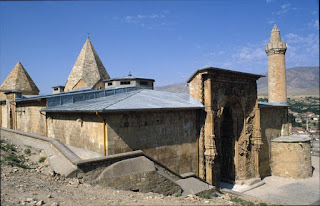Once a
year, this majestic 1,400-year-old tree showcases a transition into fall in a
remarkable way and its countless leaves change into a radiant shade of gold.
The tree is located within the walls of the Gu Guanyin Buddhist Temple, in the
Zhongnan Mountain region of China; this wonderful autumnal display entices
travelers from all over the world. Therefore, as the leaves fall and make a
vibrant ocean of gold, tourists leap at the opportunity to capture photographs
of the colorful carpet. The ginkgo tree sometimes referred to as a “living
fossil” because, despite all the drastic climate changes, it has remained
unchanged for more than 200 million years. Though, in late autumn, when the
Gingko literally Silver Berry in Chinese tree sheds its leaves, throngs of
tourists will gather in the ancient Buddhist temple to have a high regard for
the wonderful views of the old Gingko tree in its finest glory before winter.
Hence, it
is thought to be planted for “Emperor Li Shimin”, the founding father of the
Tang Dynasty (618-907), this well-known tree draws people attention from all
over China. The gingko tree is also famous as a maidenhair tree, actually an
ancient species that is native to China. Moreover the magical yellow color that
it adopts in the fall, this specific species of tree is also brilliantly
useful, serving as a source of food and equipped with numerous medical benefits
that are known in traditional Eastern medicine. This predominantly impressive
millennia-old Gingko tree is definitely popular, but as a species this tree is
also widely respected for its wealth of benefits and ancient ties to the
region.






























